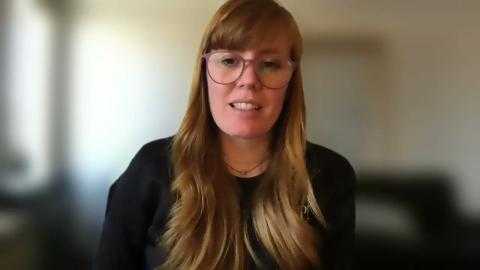MAPE celebrates National Correctional Employees Week
It’s National Correctional Employees Week and MAPE celebrates all of the correctional employees in the Minnesota Department of Corrections (DOC). MAPE appreciates the challenging work you do in the correctional facilities and communities across the state and in the Central office to make Minnesota safer.
There are thousands of MAPE corrections members to highlight but we will introduce you to two today: a probation agent who works with juveniles in southern Minnesota and a psychologist who works with people who may have a harder time changing behaviors and returning to their communities.
It takes a village to raise a child
“I think when people think of a helping profession, they think of first responders in law enforcement or the medical field. I think many corrections jobs have a unique way of helping people. As a probation officer, we do have an impact on our client’s lives, whether they know it or not. It is not always recognized because so many things are happening, you can lose sight of it,” said Molly Trieschman, Local 1901 probation agent in Le Center.
Probation and parole agents in Minnesota currently supervise 103,000 people.
Trieschman said she has always wanted to work in probation, specifically with juveniles. “One of my favorite parts about this job is I have to go to schools and do home visits, and I get to have other teams working with me. With kids, you have schools, parents, therapists – it truly takes a village to raise a child. Each child has their own support system,” she said.
Trieschman’s caseload includes 45 to 50 juveniles, which is generally smaller than a traditional adult felony caseload. “You’re working with a kid, parents, school, employment, therapy, court dates and other things, so one juvenile can feel like three adults,” she joked.
She enjoys sharing in their successes. “My most proud moments are when I go into the community and I see a kid I previously worked with and see them doing well: working behind the counter at a store, or when I’m at a school and they come up to say ‘hi’ or ‘I’m getting better grades’ or ‘I’ve been in school every day this week.’ When they’re doing good things and still want to tell me about it – that’s the best part,” she added.
But Trieschman knows life may not turn out as well for everyone she works with, “There are some kids who make some pretty life-changing, detrimental mistakes. Despite being a kid, they still have adult consequences they have to deal with. I can support them and help them know they’re going to get through this.”
Transitioning clients back to communities
Local 1101’s Jack Rusinoff, a DOC psychologist, works with a different clientele in predatory registration: sex offenders, kidnappers and others subject to predatory registration. “This job originally included only individuals with sex offenses and expanded into community notification, which is what I do. I evaluate the individuals subject to registration and score them with an actuarial tool to assign them a risk level of low, moderate and high,” he said.
After Rusinoff evaluates and scores individuals, he writes a three to six-page recommendation and shares it in a meeting with the institution housing the person, law enforcement, case manager, victims services and the individual.
Sixty-five percent of those leaving correctional facilities are scored at level one risk (low), 20 percent or so are scored at level two (moderate) and 13-15 percent are assigned to the highest risk level, three. “When it comes to community risk level, it helps law enforcement track these individuals and informs the community for public safety and protection. It’s all about trying to keep Minnesota safe and keep someone from reoffending sexually,” Rusinoff said.
If someone is a level two, law enforcement has some discretion about notifying the community. If a person has a pattern, for example, if they found more than one victim on a playground or lives by a school, and is a high-risk level three, local meetings are held in the community.
Rusinoff has been with DOC for 21 years and spends much of his time assessing people who are incarcerated, and writing evaluations. He said during the pandemic, report writing is similar, but his way of thinking is now a bit different. “When I would drive to work in the morning, I could change my mindset from being a ‘normal person’ and begin reading all of these horrifying files and could talk with some colleagues about them. Then I could leave the office and bracket it because it wasn’t in my house. It is now in my house, on my computer screen, and it takes some energy to keep it separate.”
All those difficult days end with one goal in mind – to safely transition offenders back into Minnesota communities so they can live meaningful, independent lives. Many of the decisions Rusinoff and other MAPE members make not only impact individuals being released from confinement, but the communities they live in. “When I meet with someone who was a level two or three and they’ve community change in the community for a number of years, and this is confirmed by probation agents and law enforcement, and the committee agrees to reduce their risk level – it feels like we helped someone. When someone gets a lower risk level once they’ve been out in the community, that is very gratifying,” Rusinoff said.
